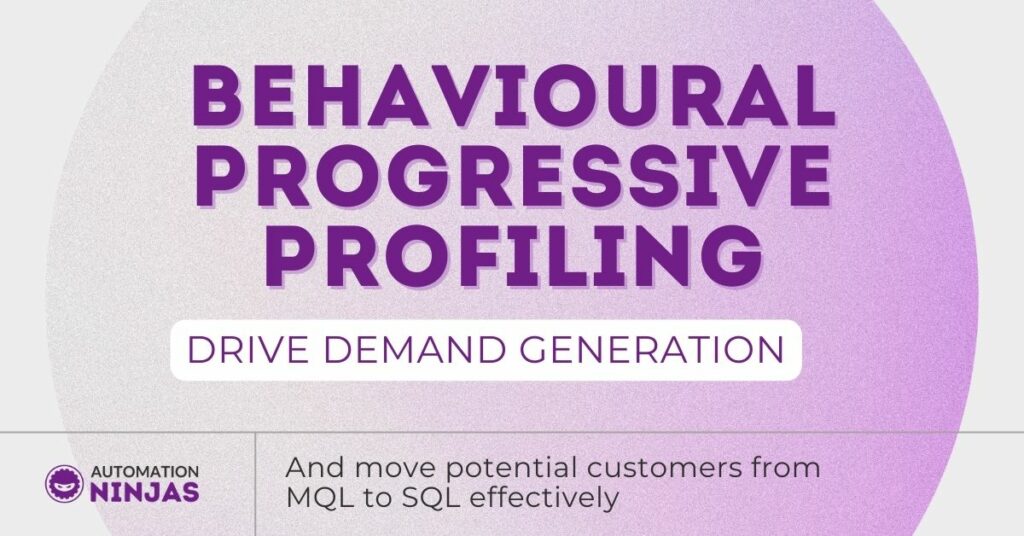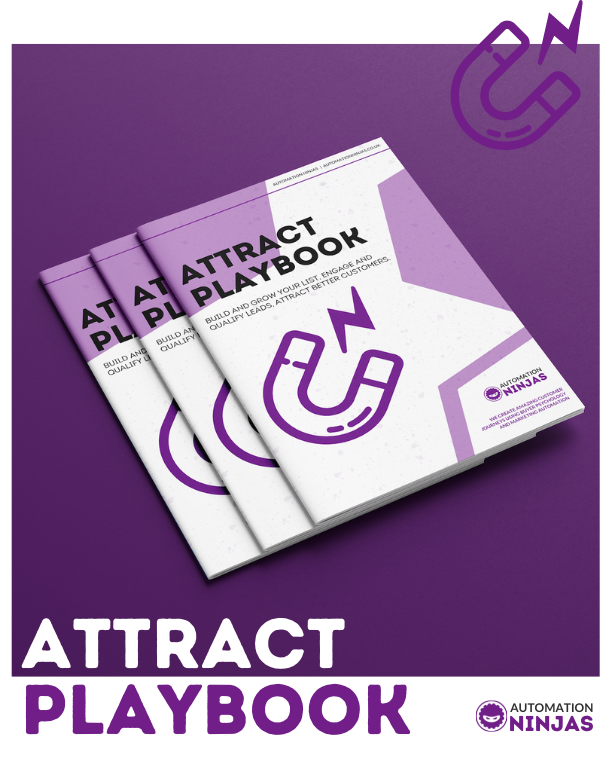AUTHOR: Kenda Macdonald
As a dedicated consultant, I specialise in elevating businesses through top-tier consultancy, fueled by a deep understanding of buyer psychology cultivated over years of experience. My expertise lies in crafting marketing and sales strategies that propel businesses to new heights by leveraging insights into the buyer brain. As a bestselling author, public speaker, and strategist, my passion for decoding human behavior drives me to innovate and deliver unparalleled results. I've designed a methodology adaptable for all types of businesses, ensuring transformative customer journeys and experiences.
What is progressive profiling?
Progressive profiling is a method of behaviourally segmenting your audience based on their interest and engagement with your content and sales materials.
While it sounds like something you’d hear about on a cop drama TV series, it’s actually a really intelligent way to not only get more sales, but create happier customers.
It’s a highly profitable way to increase your sales, personalise your marketing, gain deeper understanding of your audience and increase your customer lifetime value. All without burning your database, annoying your customers or blindly stabbing in the dark with your messaging. Which is always a bonus, because it’s embarrassing when you get it wrong.
Used by forensic psychologists in the criminal justice system, profiling is “the recording and analysis of a person's psychological and behavioural characteristics, so as to assess or predict their capabilities in a certain sphere or to assist in identifying categories of people”. It’s also become common place in business to use “psychometric” tests to group people into work types.
The aim of profiling is simply to understand what current and past behaviour means, and how that can be used to predict future behaviour.
And that is precisely what a good marketer should be doing. You should be using consumer behaviour to gain deeper understanding of your audience so that you can help them better.
Related content: 13 types of customer and how to behaviourally segment them
What progressive profiling is NOT
Let me be very clear: it’s not OK to be a creeper stalker weirdo. This is not about trying to pull the wool over your consumers’ eyes, tricking them into buying stuff they don’t want or need. That’s bad.
This is about helping your consumers. Finding ways to improve their lives. That’s good!
Modern consumers know when you’re pulling a fast one, there is no point in trying to outsmart them. Instead, focus on being relentlessly helpful.
It’s also not simply collecting more information via multistep webforms. That’s advanced data collection. This is behavioural listening.
Your consumers simply want the best products and services, and they tell you what they need with their behaviour. Progressive profiling is simply the best way to listen for, and understand what they are telling you, all from their engagement.
The advantages of progressive profiling and behavioural segmentation:
If you profile correctly, you’ll do something awesome:
You’ll turn each and every single one of your leads into multiple sales opportunities.
This is the holy grail of customer lifetime value. You’ll be able to get a much deeper understanding of audience. You can launch highly targeted campaigns driven by behaviour. And of course, your campaigns will be highly personalised sales funnels triggered, based on engagement.
It’s a beautiful, and profitable thing. But that’s not even the best part. The best part is that your consumers will be happier whilst they’re doing it.
Progressive profiling is the best way to get more sales opportunities, higher engagement and more purchases, from happier customers.
Sold? Me too. Let’s get into the nitty gritty of how to do it.
ATTRACT MORE LEADS WITH OUR PLAYBOOK
Behavioural Segmentation at it’s finest
The very first thing you need to do is identify what the segments are that you’re trying to profile people into. There are three ways to do this:
1. Work back from your products
2. Work back from your content groupings
3. Work back from your personas/ avatars
Take an extremely oversimplified example on working back from your products:
You have 3 products, and you have information that is related to/ about all three. You send that information out - by the behaviour displayed you will be able to tell which of the products they are interested in.
In this example you’re trying to profile people into one of 3 profiles based on their behaviour. The same goes for content groupings and personas. Their behaviour will segment them into each of the groupings.
Once you’re clear on their groupings you can get to the fun bit: the real profiling.
How to do it: the ingredients to the perfect profile
In order to profile you need to have behaviour to track. If you’re not providing an environment in which your audience can interact with you, you’ve got no way of making this work.
The next part of this strategy relies on engagement. You want to watch for certain engagements, and you want to track them. Each of these engagements progressively builds up the profile.
When the engagements reach a certain threshold, you want to trigger an action. We call these engagement triggers.
But you can’t have any of this without the room for engagements. And this is where the humble content saves your bacon. Quality content provides you with the space to add value and watch interactions.
Content is the backbone to this strategy. The simplest way to progressively profile your audience is to be sending out good quality content to them, and then track what they engage with. If you already have a blog, a youtube channel, or a podcast - you have the perfect content ready to be used.
When we implement this strategy for our clients we get them to email out a solid piece of content every week. This value add information is their Long Term Nurture. It’s a stream of amazing content that gets sent out to everyone on the database.
Because the content is not sales based it can go to everyone. It’s just value add. It’s what the content is on that’s important.
Depending on what topics the content covers, engagement with the information tells us what they are interested in. We use those engagements to progressively profile.
And when the engagements hit a specific threshold, they automatically trigger segment based sales campaigns, or notify the sales team that an engagement threshold has been reached.
These smaller campaigns are called short term nurture sequences, they get people ready for sales.
Suddenly - BAM - you’re progressive profiling based on behavioural segmentation.
In conclusion
Progressive profiling and behavioural segmentation has helped us sell out courses, launch new product lines extremely successfully, sell houses, re-engage cold audiences, double profits and massively increase conversion rates for our clients. It works across B2B, B2C and B2G.
It works because you’re simply listening to behaviour in an environment you’ve crafted.
Want to know how this could work for you? Let’s chat it through. Contact us now.
In the meantime, get started by identifying your segments…

Sign up to the Brainbox to stay in the loop with the latest marketing news and exclusive content
Or, if you have something specific in mind, reach out to us directly. We're all ears and ready to chat! Contact us here.



